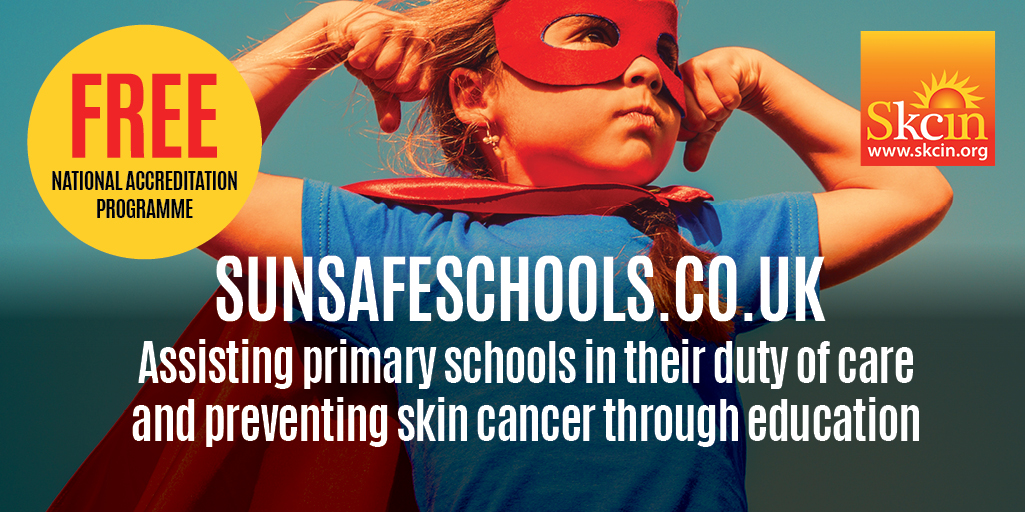Canopies & Walkways
- All Canopies & Walkways
- Fabric Canopies
-
Polycarbonate Roof
Canopies - Covered Walkways
- Enclosed Canopies
- MUGA Canopies
- Timber Canopies
- Entrance Canopies

Skin Cancer Awareness Month, May 2025
Skin cancer is the most common and fastest rising cancer in the UK. Over 230,000 cases of non-melanoma skin cancer and more than 17,500 cases of melanoma are diagnosed annually, with around 90% of all cases linked to ultraviolet (UV) exposure.
According to Cancer Research UK, 1 in 34 UK males and 1 in 47 UK females will be diagnosed with melanoma during their lifetime. It is now one of the leading causes of cancer death in the 15–34 age group and young skin is particularly vulnerable. UV damage during childhood can significantly increase the risk of developing skin cancer later in life. Fair skin is the most at risk, but all skin types need protection, especially during peak UV hours between 11am and 3pm.
With ultraviolet (UV) radiation damage in childhood strongly linked to an increased risk of skin cancer later in life, it is vital that schools act to protect pupils. Creating greater shaded space in schools is one important step, but it must be matched by education and awareness of the risks to young skin.This year, for Skin Cancer Awareness Month 2025, we are amplifying the Sun Safe Schools message from UK charity, Skcin, helping schools to take action to safeguard the health of future generations.

Founded by the family of Karen Clifford after her death from melanoma in 2005, Skcin is the UK’s national skin cancer and melanoma charity. Their mission is to embed sun safety into primary education, creating a sun safe and skin cancer free future for our generations to come.
Skcin operates five national educational programmes, including the Sun Safe Schools Accreditation Programme, providing resources, guidance and support for primary schools and nurseries to develop a robust sun protection policy. Find out more about Skcin’s vital work at skcin.org.
Shade is one of the best ways to reduce harmful UV exposure, lowering skin cancer risk while also making outdoor spaces more comfortable. Research from Australia, which has the highest rates of skin cancer in the world, shows that good-quality shade can reduce UV exposure by up to 75%.
Shade has multiple benefits:
Schools have a duty of care to provide safe outdoor spaces for students and staff.
Built shade structures, such as canopies and shade sails, offer reliable, year-round protection compared to natural shade. Advantages include:
At Streetspace, we offer durable, UV-blocking canopy solutions including polycarbonate structures, tensile membrane designs and the vibrant ORION Hypar Shade Sails. These not only protect students and staff from UV exposure but also create more inviting, comfortable spaces for outdoor play, learning and dining.

Streetspace demonstrate how high-quality shade structures can play a vital role in protecting young people from harmful UV exposure, particularly in school environments where outdoor play and learning are essential.
Some examples of our work include the Woodbridge School Prep in Suffolk, where the installation of an ORION Star shade sail canopy created a striking and practical solution for a south-facing playground area, where pupils were previously vulnerable to the risks of prolonged sun exposure.
Similarly, at Michael Faraday School in Southwark, a set of five ORION Star canopies was integrated into the nursery playground. Imaginative design was combined with effective UV protection to support a safe and enjoyable outdoor environment for the school’s youngest pupils.
Lastly, at New Barn School in Horsham, Streetspace worked with a specialist autism provision school to create a weatherproof, shaded outdoor play area with an ORION Barrel Vault canopy. While this structure also offers protection against rain and echo, the shade provided forms an important part of enabling students to enjoy the outdoors safely, year-round.
Across these examples, the right shading infrastructure supports schools in safeguarding pupils’ health, helping to reduce the long-term risks associated with UV radiation during critical early years of skin development.

Creating a sun safe school is simple if you follow these key steps:
1. Clothing
Clothing provides the first line of defence against UV radiation. School uniforms should cover shoulders and as much skin as possible. Fabrics with a tight weave or high UPF rating offer better protection.
2. Sunscreen
Students should apply broad-spectrum sunscreen (SPF 30+ with 4-star UVA protection) 20 minutes before outdoor activities and reapply every two hours. Self-application under supervision is encouraged (TUC guidance).
3. Sun Hat
Wide-brimmed hats that shade the face, neck, and ears are essential. Schools are encouraged to include sun hats in uniform policies.
4. Sunglasses
Protecting children’s eyes from UV is also important. Ensure sunglasses meet European CE standards for UV protection.
5. Shade
Install UV-protective shade structures over playgrounds, sports areas, and outdoor dining spaces. Where possible, schedule activities for early morning or late afternoon to avoid the strongest UV levels.
Download the Free Sun Safety Guide for Schools (PDF)

Primary schools now have a statutory duty to teach sun safety as part of the PHSE curriculum. The Sun Safe Schools Accreditation Programme provides:
Registration is free at skcin.org.
Our expert advisors are happy to help with your plans to create new shaded space for play, sport, dining and outdoor learning, advising on options to suit budget and capacity.
Email us at enquiries@streetspacestructures.co.uk or call us on 01227 200404.